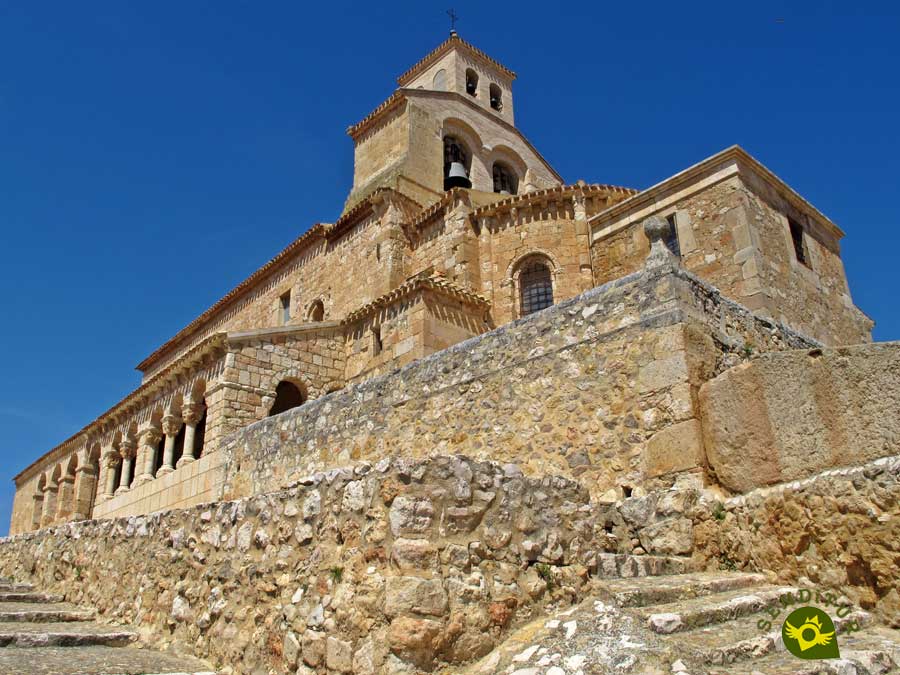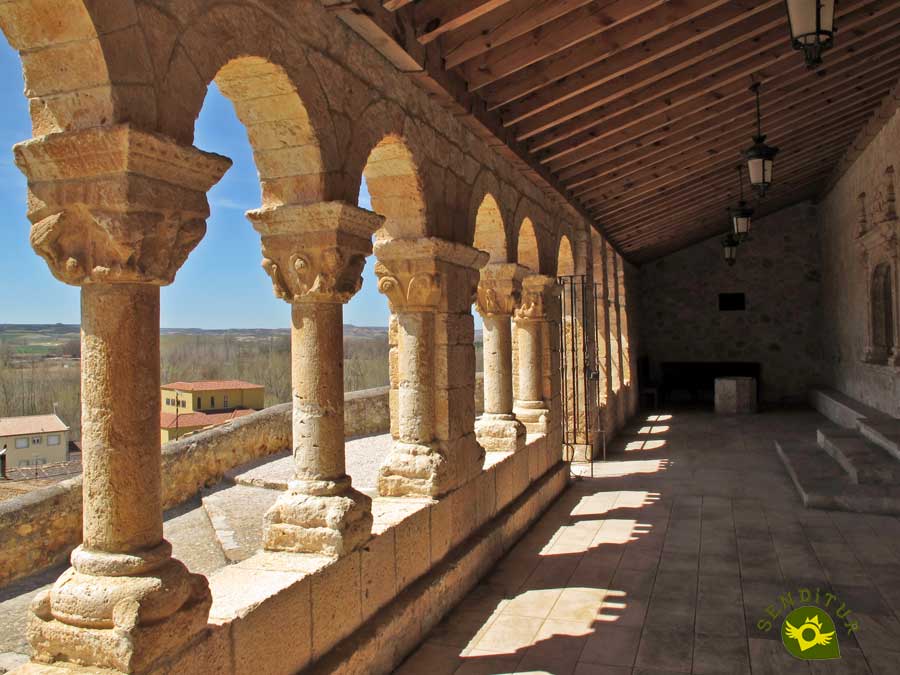Declared a Historic-Artistic Site, it is located in the west of the province of Soria, on the banks of the Duero River, in the middle of the Wool Route as well as the Route of the Exile of El Cid. The Arevacos were the first people known to have settled in the territory. From the Roman period, numerous samples of their culture have been found, tombstones, steles, reliefs... Centuries later and already known as Castro Moro, it was a fortified square where Arabs and Christians fought. Conquered by Alfonso III of Leon at the end of the 9th century and repopulated by the Count of Castilla, Gonzalo Fernandez, in 912, the burgeoning village was crowded into the slopes of the hill crowned by the castle and protected by its walls and fortifications. It was not until 1054 that El Cid finally recovered it, and it then became part of the Kingdom of Castilla.

In 1187, under the reign of Alfonso VIII, what can be considered the first Cortes of Castilla was held in San Esteban de Gormaz. The importance of the town continued to grow until it reached its maximum splendour at the end of the 13th century. In 1504 the Catholic Monarchs granted San Esteban de Gormaz the privilege of making bread cheaper. The coming centuries brought a gradual decline and abandonment to the town until well into the last century it suffered an incipient resurgence, and today it is a beautiful medieval town fully immersed in contemporary modernity.

History and legend are intermingled in San Esteban de Gormaz, which preserves among its houses unmistakable signs of an important medieval past in which architectural elements of Romanesque art from the time of its Christian repopulation persist, intermingled with Arab vestiges. Under the protective shade of the remains of the castle, which is of Arabic origin, from the 9th century, San Esteban de Gormaz has a rich Romanesque heritage, such as what can undoubtedly be considered the oldest preserved church of the Romanesque period in Soria, the church of San Miguel, which was built in 1081 and possibly also has the first Romanesque arcaded gallery of which there are references.

The church of Nuestra Señora del Rivero, on a hill, dates from the beginning of the 12th century. The parish church of San Esteban Protomártir, built over an earlier temple. The small medieval bridge that crosses the canal that carries the waters of the Duero to the flour factory. The long medieval bridge with 16 eyes over the Douro. The Tower, built and restored in the Middle Ages over the remains of a previous one. The Gate of Castilla that gives access to the interior of the town's walled enclosure. The Main Square, the High Street, and its emblazoned houses, some of them showing on their walls gravestones and Roman inscriptions. The Castilla y León Romanesque Theme Park and the Mill of the Eyes Ecomuseum, both located in beautiful natural surroundings, traditional wineries, as well as interesting themed or walking routes, complete the great attraction that San Esteban de Gormaz offers to anyone who wants to visit it.

San Esteban de Gormaz celebrates its patron saint festivities in honour of Nuestra Señora la Virgen del Rivero and Santo Cristo de la Buena Dicha from 7th to 11th September.
On 26th and 27th August the traditional Medieval Market is held in San Esteban de Gormaz. During these days the town travels back in time to an emotional and magical period, recalling its important past. Its streets, and Christian and Muslim monuments, are an unbeatable setting for children's workshops, Christian and Arab trades, camps, stables, representations of El Cid Campeador, falconry...
According to some sources it may be that one of the authors of the Cantar del Mío Cid, singing anonymously, was born in San Esteban de Gormaz and that is why he praises the city with true admiration. It is precisely in this town, which is said to have moderate and prudent inhabitants, who are fighting and tenacious, that the daughters of El Cid were cared for after the Infantes of Carrión, their husbands, vexed them and abandoned them in the oak grove of Corpes.

In the church of Nuestra Señora del Rivero, the tomb of Fernán Antolínez, also known as Pascual Vivas, a heroic Castilian knight of the 10th century, the protagonist of a famous legend that has inspired poets and writers, is preserved. It is said that on one of the many days in those days and before the arrival of the Muslim armies at the gates of San Esteban de Gormaz, the Christian troops set out to defend the town not without first, as was the custom, going to the church to be blessed before the battle. Fernán Antolínez, a great devotee, attended the religious services in the same way but was so absorbed in his prayers that until they were over he did not realise that he was completely alone. As he left the church, ready to mount his horse, take up his weapons and follow his soldiers, his squire told him that the battle was over, that the Muslims had been defeated and everyone congratulated him on the courage and bravery with which he had fought. How could this be? His horse and his armour showed the inescapable signs of battle, and while he was praying an angel took his place in what would become known as the Battle of Vado del Cascajar, celebrated on Easter Day.
MORE ROUTES AVAILABLE, DON'T MISS IT...
MORE PLACES AVAILABLE, DON'T MISS IT...
San Esteban de Gormaz can be reached from Soria on the N-122 which also links it to El Burgo de Osma on one side and to Aranda de Duero on the other. The N-110 not only connects it to Ayllon and Riaza, but also to the A-1. There are also several local roads that connect it with neighbouring towns, such as Montejo de Tiermes or Alcubilla de Avellaneda.
San Esteban de Gormaz is served by bus lines that connect it with Valladolid, Madrid, Zaragoza, Soria, Salamanca, and the towns and cities along the route. The bus station is open every day: from 7.30 p.m. to 9.30 p.m.; also on Mondays, Wednesdays and Thursdays: from 7.45 a.m. to 11 a.m. and from 1 p.m. to 5 p.m. And on Tuesdays and Fridays: from 7.45 a.m. to 5 p.m.
SENDITUR is not responsible for any variation in the information described, as well as for the misuse of its guides and recommends that everyone be responsible and prudent in carrying out the activity. Likewise, we invite you to document yourself with books and specialized guides to complement the information described. From the commitment of SENDITUR with Nature and the respect to the balance of the environment, SENDITUR urges you to travel in a responsible way, with low environmental impact and respecting at all times the Natural, Cultural and Social environment wherever you go. For any suggestion, SENDITUR invites you to send an email to .
Continue watching …